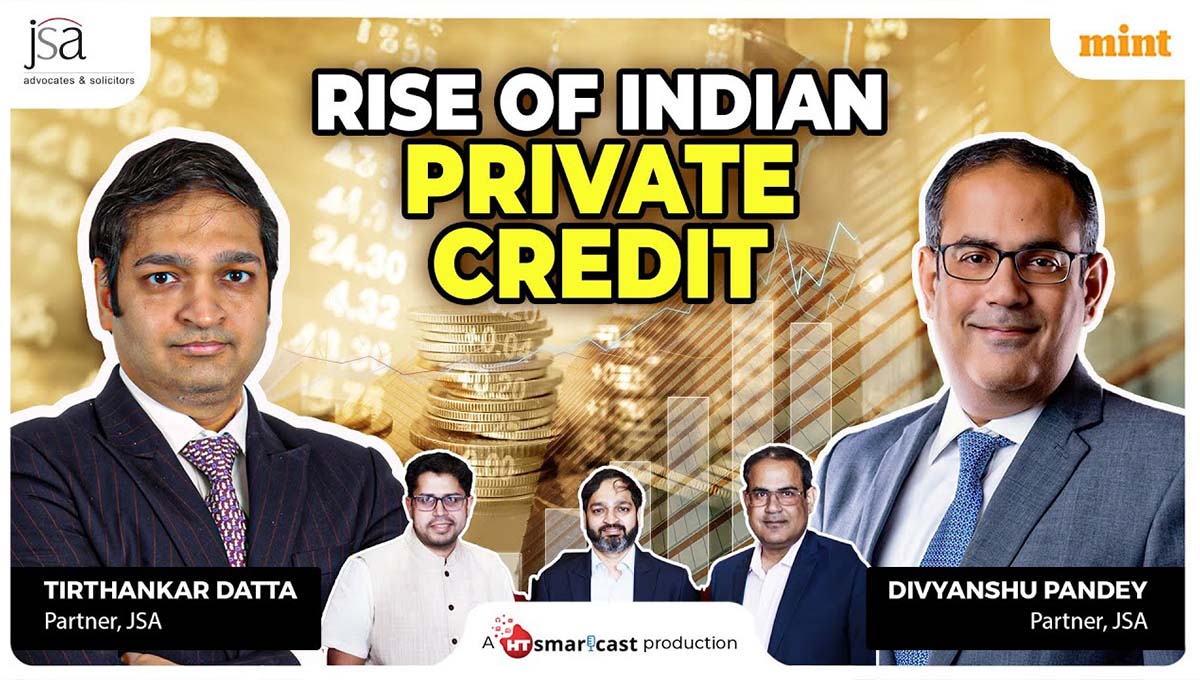The SEBI board at its meeting held on March 29, 2023 has approved the following key amendments and changes to the Securities and Exchange Board of India (Listing Obligations and Disclosure Requirements) Regulations, 2015, as amended (“LODR”) and the Securities and Exchange Board of India (Issue of Capital and Disclosure Requirements) Regulations, 2018, as amended (“ICDR”).
Disclosure of material events
1. Introduction of quantitative materiality threshold for determination of materiality of events or information.
Regulation 4 of the LODR, casts the following obligations are on a listed entity:
- The listed entity shall provide adequate and timely information to recognised stock exchange(s) and investors
- The listed entity shall ensure that disseminations made under provisions of these regulations and circulars made thereunder, are adequate, accurate, explicit, timely and presented in a simple language.
- Channels for disseminating information shall provide for equal, timely and cost efficient access to relevant information by investors.
Regulation 30(4) of the LODR requires disclosure of material information based on certain qualitative criteria, namely:
- the omission of an event or information, which is likely to result in discontinuity or alteration of event or information already available publicly; or
- the omission of an event or information is likely to result in significant market reaction if the said omission came to light at a later date;
- In case where the criteria specified in sub-clauses (a) and (b) are not applicable, an event/information may be treated as being material if in the opinion of the board of directors of listed entity, the event / information is considered material.
Listed entities are also required to devise a materiality policy based on the above principles for disclosure of information. Generally, listed entities include a further quantitative criteria for disclosure of certain material events such as litigation. This may be in the form of any event which has a monetary or determinable impact, such as 10% of the profit after tax or 1% of the revenue of the listed entity. Basis the above amendment, similar monetary or quantifiable thresholds are likely to become applicable for all kinds of disclosures.
2. Timelines for disclosure of material events or information for decisions of the board of directors or emanating from within the listed entity
Presently, Regulation 30(6) of the LODR allows for disclosure of material events within a period of 24 hours from the event, with exceptions for certain decisions of the board, such as approval of dividends, buybacks, increases in capital or approval of financial results, which have to be intimated within 30 minutes of the conclusion of the meeting. The amendments approved would likely make the 30 minute timeline applicable for a wider range of board decisions, if not all, while the overall time period for disclosure of material information has been reduced from 24 hours to 12 hours.
3. Verification, confirmation or clarification of market rumours
With effect from October 1, 2023, the top 100 listed companies by market capitalisation will be required to verify, confirm or clarify on market rumours. This clarification or confirmation regime will be extended to the top 250 listed companies by market capitalisation on April 1, 2024. Based on the press-conference by the SEBI chairperson, we understand that this will be limited to mainstream media. One of the key points of interest will remain the definition of mainstream media, as the universe of information has increased exponentially in recent times with the advent of the digital news medium and social networking sites.
4. Disclosure of certain types of agreements binding listed entities
As per a recently released discussion paper, a new clause 5A is proposed to be incorporated in para A of Part A of Schedule III to the LODR to cover disclosure of any agreement that impacts the management or control of a listed entity or imposes any restriction or creates any liability on a listed entity. Further, agreements whose purpose and effect is to impact the management or control or impose any restriction or create any liability also needs to be disclosed. However, agreements entered by a listed entity for the business operations of a company (e.g. supply agreements, purchase agreements etc.) is proposed to be excluded from the scope of disclosures.
Further, the discussion paper had also proposed a takeover regulations type event based disclosure, making it obligatory on shareholders, promoters, promoter group members, directors, key managerial personnel or related parties to inform the listed entity of entering into such agreements.
Once enacted, the disclosure paper also envisaged disclosure of such agreements by June 30, 2023 and ratification by the board and shareholders of the listed entity at subsequent general meeting during Fiscal 2024.
Corporate governance norms
5. Periodic shareholder approval of special rights
With a view towards further strengthen corporate governance norms at listed entities, SEBI has approved amendments to include a periodic approval of any special rights granted to certain shareholders. As per a recently issued discussion paper, the proposal was to seek shareholder approval for special rights, such as director nomination, at an interval of five years. The discussion paper had also proposed that the existing special rights available to shareholders be renewed within a period of five years from the date of notification of the amendments to the LODR. Depending upon the amendment regulations, it may also open flood gates for shareholders who were contemplating to avail special rights in a listed company. Moreover, as the SEBI board meeting mentions ‘any special right granted to a shareholder of a listed company’, it may lead to queries from private equity investors for retaining certain special rights (other than appointment of nominees) to be continued post the IPO of a company, on the grounds of the same being permitted in case of any listed company (subject to periodic shareholder approval).
6. Alignment of disclosure requirements for BTAs and schemes of arrangement
In terms of a recent discussion paper, SEBI had proposed to institute an additional mechanism for shareholder verification and approval of the process of disposal of undertakings or entities outside the scheme of arrangement process. Currently, the scheme of arrangement requires approval of the shareholders and stock exchanges, with certain exceptions and the amendment proposed would align the need to seek approval between business transfer agreements or slump sale arrangements with those applicable to schemes of arrangement.
The proposals included disclosure of objects and commercial rationale for such sale, disposal and/or lease to the shareholders with voting approval to be obtained from the majority of the minority shareholders. It should be noted that this approval would be in addition to approvals required from shareholders for disposal of assets under the Companies Act, 2013.
7. Periodic approval of directorship term
In the interest of good corporate governance at listed entities, all directors appointed to the board of a listed entity will need to go through periodic shareholders’ approval process, thereby providing legitimacy to the director to continue to serve on the board. In terms of the recent discussion paper, this would be on the similar lines being followed for the appointment / re-appointment of whole time directors and independent directors. The proposal set out in the discussion paper was to have such periodic shareholders’ approval at least once in every five years from the date of his / her first appointment to the board. For existing directors, who have not been subject to reappointment since April 1, 2019, the re-appointment would require to be obtained during Fiscal 2024.
8. Disclosure of financial statements by newly listed entities
Read with a recently issued discussion paper, the proposed amendment would require a newly-equity listed entity to disclose its first financial results post its listing, for the period immediately succeeding to the periods for which financial statements were disclosed in its offer document for initial public offer, within 15 days from the date of listing or as per the applicable timeline under LODR Regulations, whichever is later. The below illustration from the discussion paper dated February 20, 2023 helps explain the requirements:
For example, in case of listing on March 01, 2023, as per the requirement under ICDR Regulations, the issuer would have disclosed in its offer documents the financial results till the period ended September 30, 2022. Hence, post its listing, it would be required to disclose the financial results for the succeeding period, i.e., quarter ended December 31, 2022, within 15 days from the date of listing, i.e. by March 16, 2023.The annual financial results for the financial year ended March 31, 2023 would be required to be disclosed as per the timeline specified in the LODR Regulations, i.e., by May 30, 2023.
Having said that, SEBI in its board meeting has communicated that a streamlined approach will have to be followed by newly listed companies towards releasing their first set of financial results immediately post listing, primarily to bridge the gap between the financials as disclosed in the prospectus and subsequently post listing.
9. Timeline for filling up vacancies
Listed entities will be required to fill up the vacancy of the offices of directors, compliance officer, chief executive officer and chief financial officer within a period of three months from the date of such vacancy, to ensure that such critical positions are not kept vacant indefinitely.
Amendments to ICDR
10. Underwriting
In furtherance of the SEBI consultation of February 2023 on ICDR, , SEBI has approved amendments to the ICDR to legislate the difference between underwriting for shortfall in demand and underwriting for technical rejections or payment risk. In either case, if adopted, will require to be agreed upon by the issuer and the underwriters prior to the filing of the red herring prospectus and disclosed to the prospective investors. This development mandates issuers, selling shareholders (if any) and lead managers to evaluate the need to underwrite an IPO only at the red herring prospectus stage, after factoring all aspects during that phase until allotment of shares for any know or unknown event expected to hinder the IPO (whether directly or indirectly).
Suitable amendments to Regulation 40 of the ICDR, as suggested by the discussion paper are awaited.
11. Bonus issues
SEBI also approved two amendments in relation to bonus issues of shares by listed entities. First, as long as there is a mismatch between the issued and listed capital of a company, it shall not be entitled to undertake a bonus issue given that a bonus issuance announcement is price sensitive. Accordingly, SEBI has mandated to resolve such discrepancies in the share capital via seeking in-principal approvals by the issuer from the stock exchanges for all its pre-bonus shares. This is a positive move to iron out hindrances faced by bourses in granting in-principal approvals during the aforesaid situation as it only widens the existing gap.
Second, bonus issuances must henceforth be done compulsorily in dematerialised form. This is in line with the recent regulatory move of compulsory dematerialisation of securities and allotment and transfer of securities in dematerialised form including for issuers enroute an initial public offering. While this step is surely progressive, practically, this may impact certain issuers with legacy physical shareholders who remain untraceable. Probably, the registrars and stock exchanges may have to huddle up, to draw a road map to park such unclaimed bonus shares akin to the framework in case of rights issues, wherein such shares are kept in suspense account.
It is critical to note that the SEBI press release specifically mentions that the amendments to ICDR are ‘with the objective of increasing transparency and streamlining certain issue process’ and consequently, the above two developments are only some of the amendments approved by SEBI in its board meeting and one will have to wait for the fine print of the ICDR amendment regulations to get hold of the other amendments to ICDR.
This blog is authored by Capital Markets team.








